Content
There are many gardeners among gardeners who grow small-fruited tomatoes. Today the assortment of such tomatoes is quite wide. This creates certain difficulties when choosing a variety.
Small fruits belong to the cherry group. One of the varieties is Ildi's tomato, which managed to win the hearts of gardeners. Small tomatoes are not only suitable for preservation, but they can also decorate any dish on the festive table. The article will give a detailed description of the variety, its characteristic features and growing rules.
Description of tomato
Any gardener who decides to tackle a new variety of tomatoes studies in detail the description and characteristics that manufacturers give on the packaging. First, we will introduce the features of the bush and fruits.
Description of the bush
- Ildi tomatoes are tall, indeterminate varieties. The height of the bush reaches 180 cm. These are trellis plants. The variety is early ripe, the first fruits ripen in 85-100 days from germination.
- Ildi tomato bushes are abundantly leafy. Leaves are rich green, medium in size.
- The brushes resemble a fan of a complex shape. The first inflorescence appears above the ninth leaf, the rest - every two.
- On long, up to 30 cm inflorescences, a huge number of pale yellow flowers. This can be clearly seen in the photo. Almost every flower is tied, many small tomatoes are formed.
Fruit
The Ildi tomato variety is distinguished by a large number of small fruits, weighing no more than 15 grams. On one brush, there are up to 60 pieces. And the plant throws out peduncles up to 10 pieces! The shape of the tomatoes is oval-round, plum-shaped. The fruits are delicious, sweet. Unripe tomatoes are green; in technical maturity, the fruits acquire an amber orange color.
Moreover, tomatoes do not ripen at the same time. On one inflorescence, you can see green, blange and orange tomatoes. But that's not all: on the brushes, besides the fruits, there are always flowers.
The skin of a Ildi tomato is not only tender, but also strong. The pulp is juicy with a small amount of seeds. The fruits are universal, so housewives will find a use for them. Can be preserved whole, eaten fresh. But most often small-fruited Ildi tomatoes are added to assorted vegetables, they look beautiful.
Characteristics of the variety
In order to have a complete understanding of the selected vegetable crops, one cannot do with a description. The characteristic is important in this case. Let's take a look at the positive and negative sides of the Ildi tomato.
Benefits
- Early maturity. You can get fresh tomatoes of this variety early. Fruiting is extended, which can also be called a plus.
- Taste qualities of tomatoes are excellent.
- Due to the large number of fruits, the yield is high, and as our readers note in the reviews, it is stable. One bush yields up to 3.5 kg of sweet tomatoes.
- The fruits of the variety do not crack, hold firmly on the stalk, do not fall off the brush even when overripe.
- It is possible to transport Ildi tomatoes at any distance, without losing their presentation.
- The fruits are stored for a long time, the taste is preserved 100%.
- Ildi's tomato seeds can be harvested on their own, as it is not a hybrid.
- Plants are resistant to diseases that other nightshade crops suffer from.
Minuses
Of the shortcomings of the Ildi variety, one can perhaps single out the need for tying up throughout the season.And not only the stems, but also heavy brushes. In addition, you need to constantly remove stepchildren and excess, spent leaves.
Features of growing and care
Breeders advise growing Ildi tomatoes in open or protected ground. Many gardeners plant plants on a balcony or loggia. An excellent decoration both in flowering and fruiting state.
Growing seedlings
The Ildi tomato variety is mid-season, for an early harvest it is better to grow seedlings. Seeds are sown two months before planting in a permanent place in loose fertile soil, to a depth of no more than 4 mm.
There is nothing wrong with that, just the seeds are too small.
According to the description, Ildi's tomatoes are distinguished by an excellent harvest. But you can achieve the proper results if you start with seedlings. She should be strong, stocky.
Picking is a mandatory procedure. It is carried out two weeks after sowing. Seedlings from the first days need sufficient lighting, otherwise they will stretch out, not getting a harvest.
Tomatoes are hardened before planting in the ground. When the stems of the tomatoes have acquired a delicate purple color, they can be considered ready for transplanting.
Transfer to the ground
Ildi's tomatoes should be planted in a permanent place in a warm ground. The air temperature at night should be at least +10 degrees. Plants are first planted in a greenhouse at the end of May. In open ground in early June.
Organic matter is added to the soil before digging: peat, humus, compost. It is also necessary to add wood ash, which is not only a fertilizer with a full-fledged complex of trace elements, but also saves the tomato root system from black leg disease. If you trust chemistry, you can use mineral fertilizers.
Since the Ildi variety grows strongly, when planting in a greenhouse, choose a place on the edge so that it is more convenient to care for. After planting, the seedlings are immediately tied to a reliable support. Then this procedure is repeated every 10 days. You can pull the trellis, it is also convenient.
No more than three Ildi tomatoes are planted per square meter. I form each bush into 1 or 2 stems. The lower leaves up to the first inflorescence are removed already at the stage of planting in the ground.
Fruiting begins after transplantation, after 80 days from germination. The fruits are harvested by the piece or the entire cluster is cut off, if the tomatoes are partially in technical ripeness, partially blange.
Caring for Ildi in the ground
It is not difficult to care for Ildi tomatoes. As we have already noted, the inconvenience lies in tying and pinching. The rest of the agricultural technology is traditional:
- watering and feeding;
- loosening and removal weeds;
- soil mulching;
- preventive treatments for diseases.
If Ildi tomatoes are grown outdoors, you will have to pinch the stems after 4 or 5 brushes have formed. Otherwise, the plant will not have enough strength to form a crop, not all flowers will be tied.
Diseases and pests
Ildi tomatoes are resistant to many diseases. Late blight, as gardeners note in the reviews, is never affected. But leaf spot is sometimes observed. Therefore, one cannot do without preventive treatments of the bushes.
Today gardeners are trying to use environmentally friendly materials. Tomatoes are sprayed with an extract of wood ash, solutions of potassium permanganate, iodine, boric acid. In addition to protecting against diseases, plants receive foliar feeding.
As for pests, most often these are aphids, and, oddly enough, wasps.
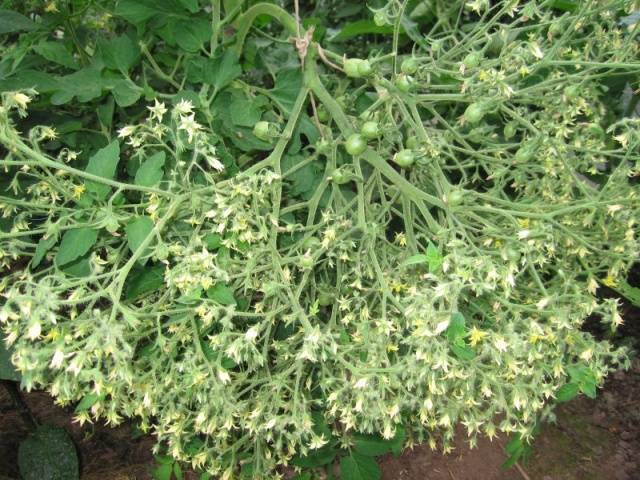
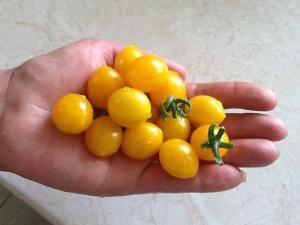
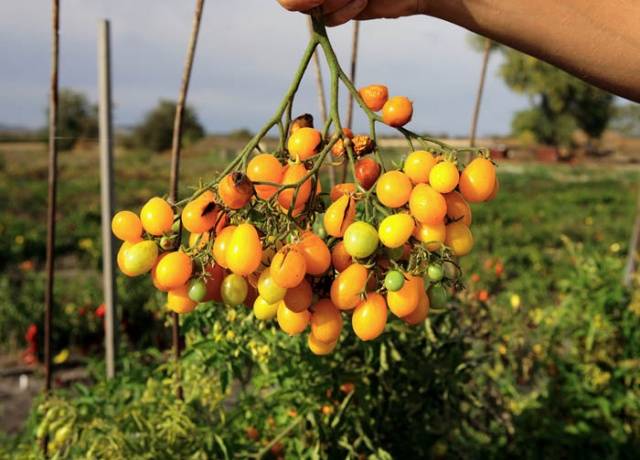
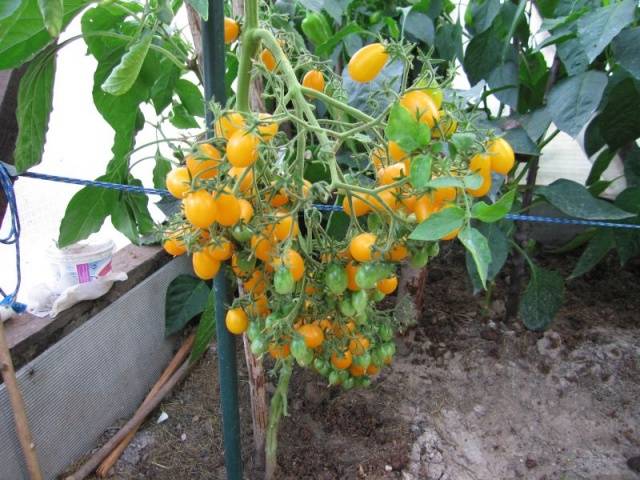
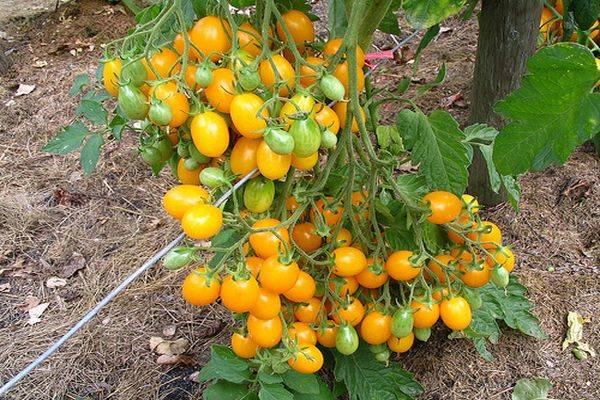
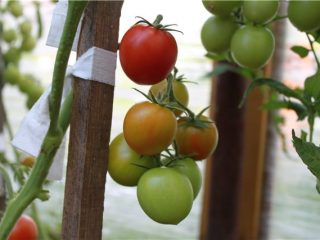
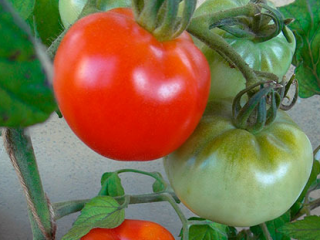


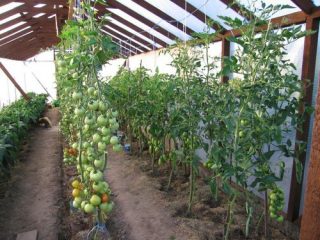
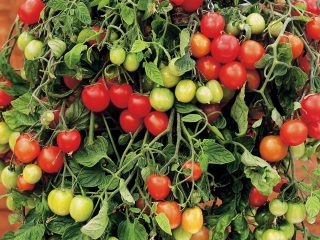


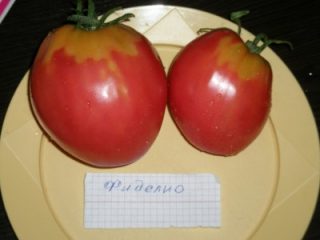
I have been growing in Siberia, in the Omsk region, for several years. Late sort, of course, but it grows up, has time
This variety came to me about 10 years ago from China. The relatives brought it. I didn’t know the name (I don’t speak Chinese), but I found it on the Internet. Everything that is written exactly matches. I can only add that I leave 2, max 3 brushes (Tver region) no longer ripens. But that's enough. His children love him very much. Phytophthora is not afraid, but it is susceptible to clodosporia. There is a crop in any summer, even if it is hot or damp (in the greenhouse). Only I have never had such large ones, in the total mass they are smaller. It's a treat like candy. For many years I have been planting my own seeds, everyone sprouts together, there is no trouble with seedlings.
Irina, hello. Please tell me, have you tried planting Ildi in open ground?
Hello, no, I have not tried it. The weather conditions of the Tver region do not allow this.